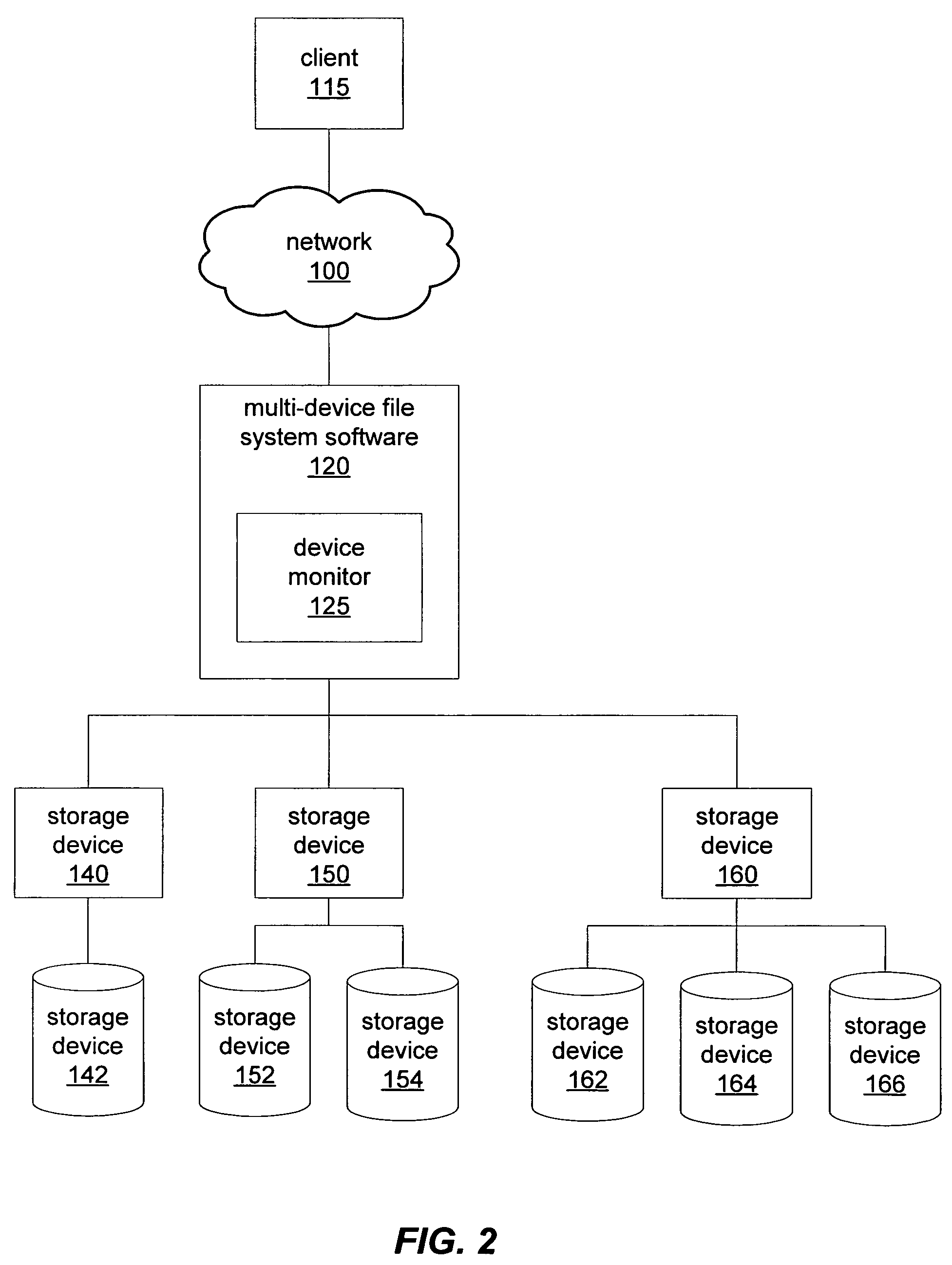Performance-adjusted data allocation in a multi-device file system
a file system and data allocation technology, applied in the field of data storage, can solve the problems of one storage device starting to fail, device-level data allocation occurring without the knowledge or involvement of the file system, and the entire storage environment is complex, and achieves the effect of low overall throughput and fast access tim
- Summary
- Abstract
- Description
- Claims
- Application Information
AI Technical Summary
Benefits of technology
Problems solved by technology
Method used
Image
Examples
Embodiment Construction
[0021]FIG. 1 is a block diagram illustrating, according to one embodiment, a multi-device file systems capable of implement performance-adjusted data allocation as described herein. FIG. 1 illustrates a computer network, according to certain embodiments, in which multi-device file system software, executing on a host device, may be configured to apply performance-adjusted data allocation when storing data to multiple storage devices. File system software for a multi-device file system may present data in a unified manner as if the data resides on a single storage device even though the file system may utilize multiple storage devices that each may also include multiple storage devices. Data in a multi-device file system may be stored on a number of individual storage devices that may make up a single, virtual, unified data device or volume presented to client applications. In some embodiments, a device may be a logical device or volume such that a multi-device file system may compri...
PUM
 Login to View More
Login to View More Abstract
Description
Claims
Application Information
 Login to View More
Login to View More - R&D
- Intellectual Property
- Life Sciences
- Materials
- Tech Scout
- Unparalleled Data Quality
- Higher Quality Content
- 60% Fewer Hallucinations
Browse by: Latest US Patents, China's latest patents, Technical Efficacy Thesaurus, Application Domain, Technology Topic, Popular Technical Reports.
© 2025 PatSnap. All rights reserved.Legal|Privacy policy|Modern Slavery Act Transparency Statement|Sitemap|About US| Contact US: help@patsnap.com



